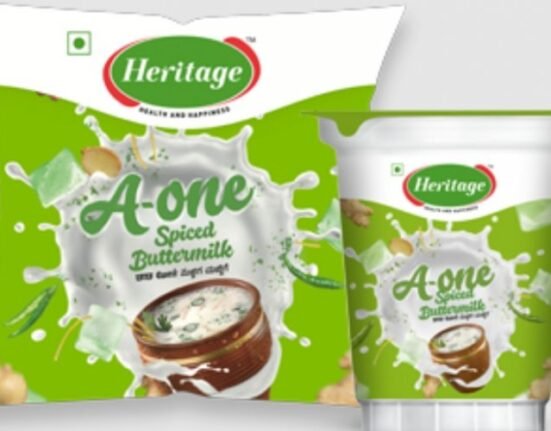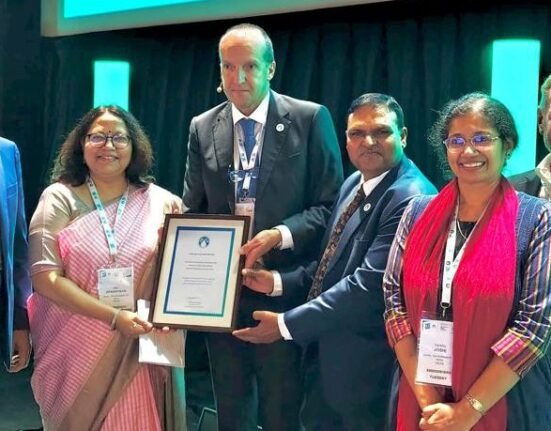Ajmer | 6 May 2025 By Gautam Karmakar for Dairy Dimension
Facing mounting discontent among dairy farmers in Rajasthan, Ramchandra Chaudhary, Chairman of Saras Dairy, assured stakeholders that urgent steps are being taken to resolve two pressing challenges: a severe cattle feed shortage and delayed subsidy payments under the Milk Production Support Scheme.
At a press briefing in Ajmer, Chaudhary acknowledged that dairy producers had not received the promised ₹5 per litre subsidy for over two months. Simultaneously, surging fodder prices—driven by climate stress, low forage output, and transportation bottlenecks—have strained regional dairy operations.
“All pending payments will be cleared, and the feed crisis will be resolved by May 13,” said Chaudhary, adding that the Rajasthan Cooperative Dairy Federation (RCDF) has assured logistical and financial support.
Protest Deferred, But Pressures Remain
The announcement came just in time to avert a planned protest by dairy farmers outside RCDF’s office. “We had prepared for a large demonstration, but given the assurances, we have deferred it temporarily,” said Chaudhary.
However, dairy unions remain cautious. “Delays in subsidy disbursement have become a pattern, not an exception,” said one Ajmer-based farmer leader, calling for automated and time-bound payment mechanisms.
India’s Broader Pattern: Subsidies, Delays, and Fodder Woes
This is not an isolated crisis. Similar incidents have unfolded across India’s dairy heartland, as chronic feed shortages and inconsistent payment cycles expose the structural fragility of cooperative models.
According to a recent report by Jordbrukare India, India’s fastest-growing dairy intelligence and trade analytics platform, more than 60% of Indian milk producers depend on state-backed support price schemes. However, implementation varies drastically across states.
Karnataka: A Subsidy Powerhouse with its Own Bottlenecks
In Karnataka, the KMF (Karnataka Milk Federation) pays a ₹5 per litre subsidy directly to milk producers, funded by the state government. Yet, protests broke out in Mandya and Chikkaballapur in 2023 due to delayed payments running into crores. During a severe fodder deficit last year, the state briefly hiked the subsidy to ₹6 per litre, underscoring the linkage between feed economics and subsidy viability.
Tamil Nadu and Maharashtra: Variations on the Theme
In Tamil Nadu, the cooperative brand Aavin offers procurement incentives but has struggled with cash flow gaps, requiring a ₹150 crore government infusion in 2022 to stabilize operations.
Maharashtra, meanwhile, experimented with a mixed model, combining transport subsidies with milk procurement incentives in drought-affected districts like Beed and Solapur. However, farmer bodies have criticized the lack of a consistent pricing policy and irregular fodder support during lean periods.
Long-Term Fixes vs Short-Term Firefighting
Experts and farmer advocacy groups have long called for systemic overhauls, including:
- Digitization of payment systems to ensure timely credit to farmer accounts
- Creation of regional fodder banks with climate-resilient forage species
- Integration of weather forecasting with feed supply chains
- Cross-state benchmarking of dairy support schemes for best practices
Jordbrukare India’s analysis emphasizes that while cooperative-led dairy models remain India’s backbone, state-level political will and execution quality determine farmer outcomes more than policy announcements alone.
What Lies Ahead?
Saras Dairy’s crisis management will be closely watched—not just by farmers, but by dairy cooperatives nationwide. With India’s dairy sector navigating climate shocks, feed insecurity, and subsidy fatigue, Rajasthan’s experience could serve as a microcosm of the challenges ahead.
As Dairy Dimension continues to track regional trends, one question remains central: Can state-backed cooperatives adapt to become more agile, transparent, and technology-driven—before farmer confidence erodes further?
📌 Editor’s Note:
This article is part of Dairy Dimension’s “State of India’s Dairying” series. Data and insights were supported by Jordbrukare India, the dairy market intelligence partner.






